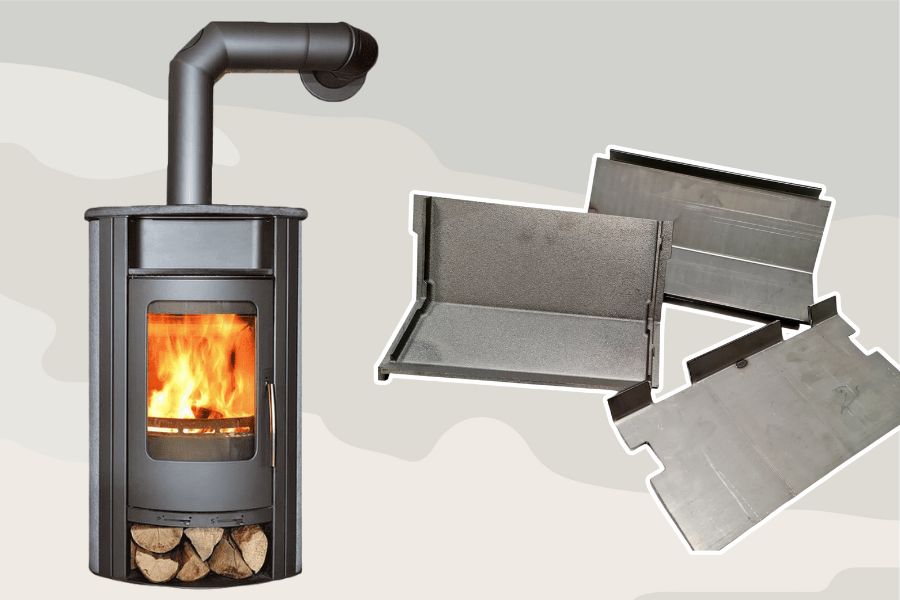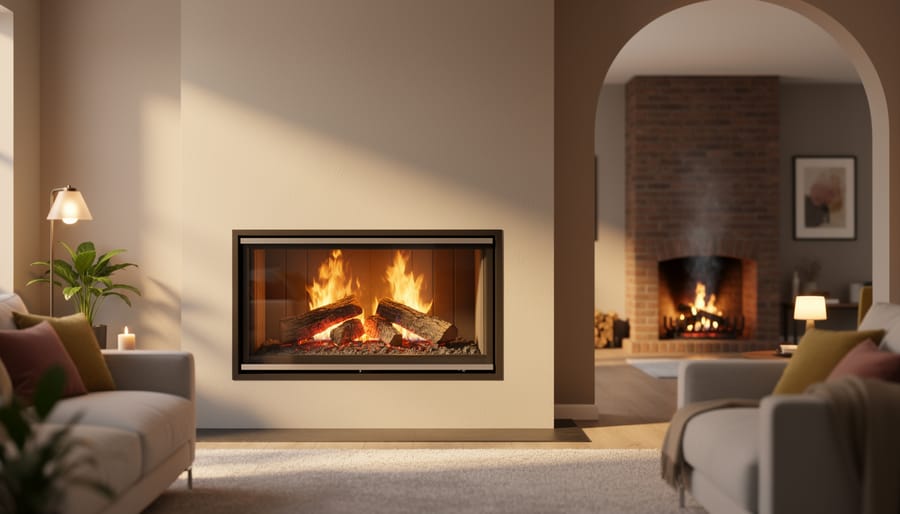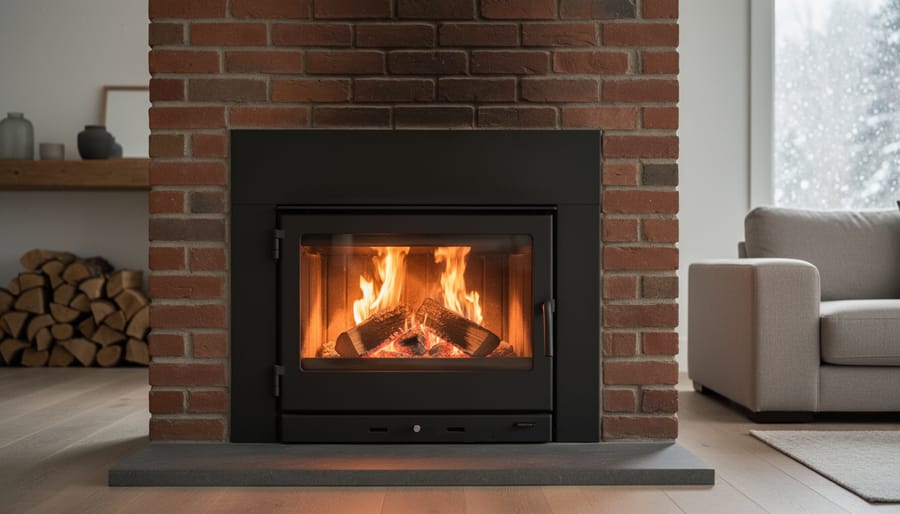Wood-burning stoves are a great way to heat a room or an entire house and have been a popular choice for many people for decades. However, to ensure that your wood-burning stove is functioning correctly, it’s essential to understand its components, including the baffle plate.
This article will answer some of the most frequently asked questions about wood stove baffles, including what they are, what they do, and why they matter.
We’ll also discuss the material of baffle plates, the proper placement, and how to replace or repair them if necessary.
So, to ensure your wood-burning stove is operating at maximum efficiency and safety, keep reading to learn everything you need to know about wood stove baffles.
What Does A Wood Stove Baffle Do?
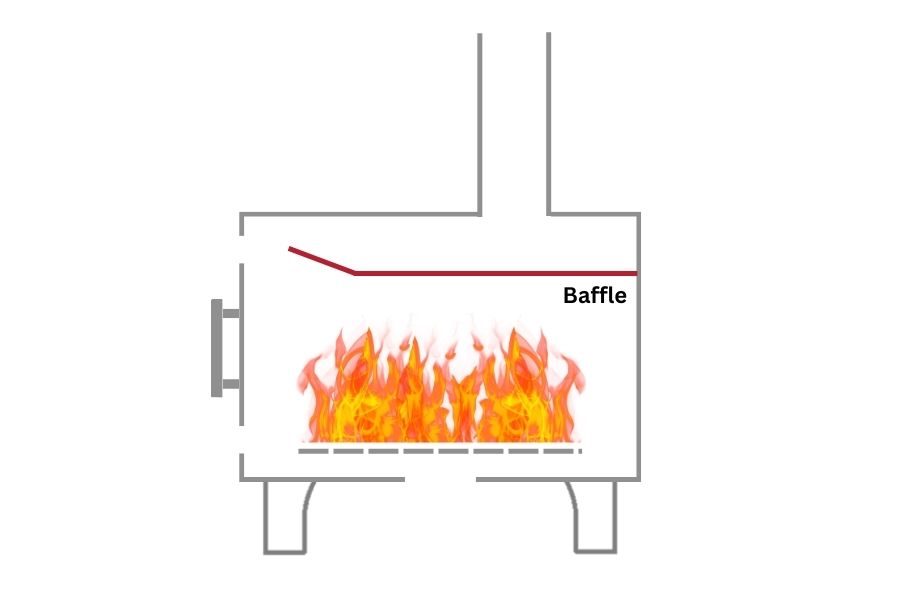
A wood stove baffle is an essential component of a wood-burning stove that sits below the stove’s flue at the top of the firebox.
The primary purpose of the baffle is to regulate the flow of smoke and hot gases, enabling them to undergo more complete combustion before exiting through the flue.
This increases stove efficiency, as even more intense heat, is transferred into the room and less is lost up the open the air intake to create a pull before you light the fireplace.
To ensure a proper draft and prevent smoke from backing up into your home, it’s important to create a good pull before lighting the fire.
One way to do this is to open the air intake fully before starting the fire. This allows heated air to flow freely through the stove and chimney, creating a strong draft that pulls smoke up and out of the chimney.
After establishing the fire, you have the ability to regulate the temperature and burn rate by adjusting the air intake. Always be cautious when working with wood-burning stoves or any other heating appliance and follow all manufacturer instructions and safety guidelines.
The baffle plate work can also help reduce the amount of creosote buildup in the chimney, which can be a fire hazard if not properly cleaned.
In A Wood Burning Stove, What Is A Baffle Plate?
A baffle plate is a metal plate that sits at the top of the firebox in a wood-burning stove, just below the flue.
Its function is to slow down the flow of smoke and gases, ensuring they are burnt more completely before exiting through the flue.
The shape and material of the baffle plate can affect how it performs, so it’s essential to choose the right one for your stove.
Why Does It Matter if the Baffle Plate Is Not Working Properly?
If the baffle plate in your burning wood stove is not working correctly, it can lead to several problems.
First and foremost, improper usage of a wood-burning stove can lead to reduced efficiency, causing a decrease in the amount of heat transferred into the room and an increase in heat loss up the chimney.
Secondly, it can increase creosote buildup in the chimney, which can be a fire hazard.
Finally, it can also cause smoke to enter the room, which is unpleasant and potentially dangerous.
Without the Baffle Plate, Is It Safe to Operate a Wood Burner?
Operating a wood burner without a baffle plate is not recommended. Without the baffle, the stove’s efficiency will decrease, leading to a lower transfer of heat into the room and increased heat loss through the air vents.
This can also lead to increased creosote buildup in the chimney, a fire hazard.
What Is the Material of a Wood Stove Baffle?
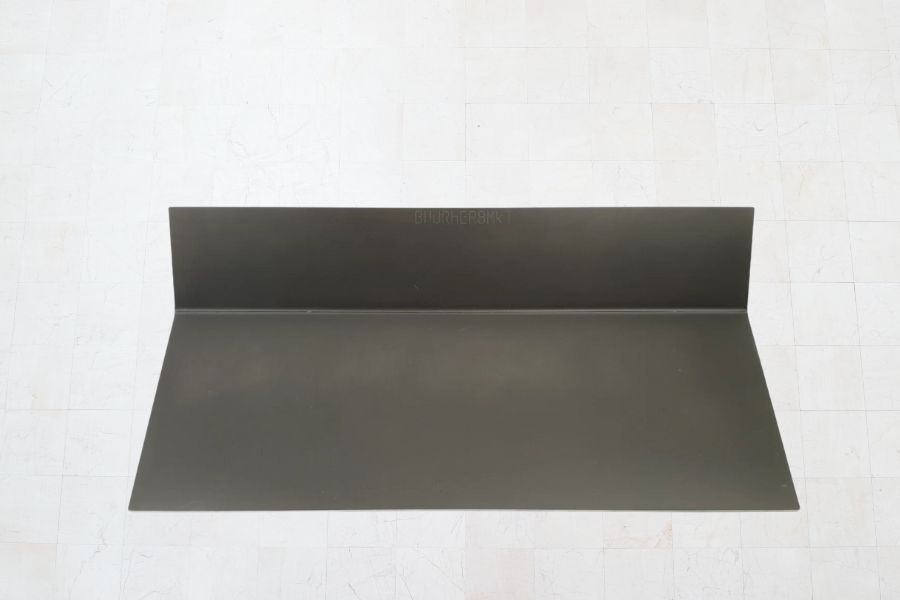
Wood stove baffles are typically constructed from various materials, such as cast iron, steel, and other metals.
The material used can affect the baffle’s performance, so choosing the right one for your stove is important.
Use Some Newspaper to Test the Chimney Pull
Testing the chimney pull is a good idea before lighting a fire in your wood stove. You can do this by lighting some newspaper and holding it up to the flue.
If the smoke is drawn up the chimney, the pull works correctly. If not, you may need to adjust the baffle plate or other components to improve the chimney pull.
The Baffle Plates Position
The position of the new baffle plate in your wood stove is critical to its performance.
The baffle should be positioned at the top of the firebox, right below the flue, and it should be installed in accordance with the instructions provided by the manufacturer.
The position can affect how the stove burns and its efficiency, so it’s essential to get it right.
The Importance of Having Clean and Clear Air Passages for the Stove to Function Properly Is Vital

Clean and clear air passages are crucial for wood-burning stoves to function correctly.
Blocked or dirty air passages can lead to reduced efficiency, increased creosote buildup, and even smoke entering the room.
Regular cleaning and maintenance are essential to ensure your stove works at its best.
How to Replace or Repair Your Baffle Plate in Your Wood Stove
If your baffle plate fell or needs replacing or repairing, it’s best to consult with a professional or refer to the manufacturer’s instructions.
Installing or replacing baffle plates is not a job for the average DIYer, as it requires a good understanding of the design of wood-burning stoves and how to work safely with metal components and high temperatures.
If you’re unsure, it’s best to seek professional help.
Can the Weather Cause a Stove to Smoke?
Yes, weather can affect the performance of wood-burning stoves and cause smoke production. Cold, damp weather can cause inefficient burning, leading to more smoke.
Strong winds can create downdrafts, pushing smoke back into the room.
Proper installation and maintenance, well-seasoned wood, and a wind cap can minimize these effects.
How to Remove Wood Stove Baffle
To remove the baffle plate in your wood stove, consult the owner’s manual for specific instructions.
Wait for the stove to cool down completely before removing the screws or brackets holding the baffle. Inspect the baffle for damage or wear, and clean it with a stiff brush or scraper if necessary.
If the baffle is significantly damaged, it is advisable to consider replacing it with a new one.
How to Prevent Smoke Coming Out of Your Wood Burner or Multi-Fuel Stove
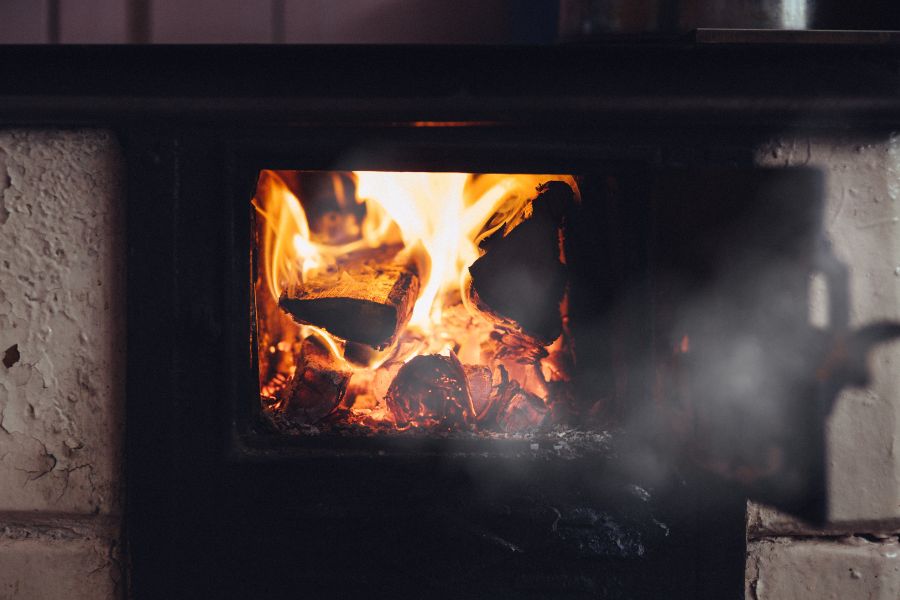
To prevent the emission of smoke from your wood burner or multi-fuel stove, it is crucial to prioritize the correct installation and regular maintenance of your stove.
Ensure that the chimney is clean and free of blockages and that the air passages within the wood-burning stoves are clear.
You can also try using seasoned firewood, which burns more cleanly and produces less smoke.
Additionally, avoid overloading your wood-burning stove with too much wood, which can cause smoke to back up.
How Do I Clean a Wood Stove Baffle Plate?
Clean your wood stove baffle regularly to maintain efficiency and prevent increased smoke production.
Ensure that your stove has fully cooled down and carefully follow the instructions provided by the manufacturer to remove the baffle.
Use a stiff brush or scraper to remove any buildup or debris, and wear gloves and a mask to protect yourself.
After cleaning, reattach the baffle and resume normal use.
Open the Air Intake to Create a Pull Before You Light the Fire
To ensure a proper draft and prevent smoke from backing up into your home, it’s important to create a good pull before lighting the fire. One way to do this is to open the air intake fully before starting the fire.
This allows air to flow freely through the wood-burning stoves and flue pipe, creating a strong draft that pulls smoke up and out of the chimney.
After establishing the fire, you can actively adjust the warm air intake to regulate both the temperature and burn rate.
Always be cautious when working with a wood-burning stove or any other heating appliance, and follow all manufacturer instructions and safety guidelines.

